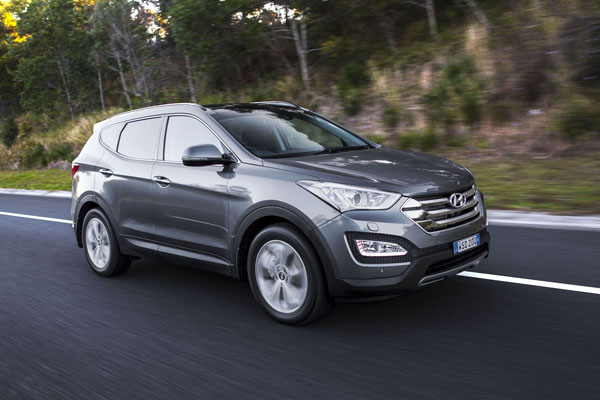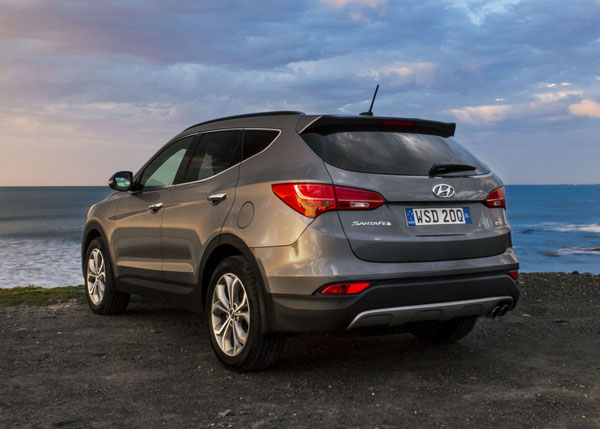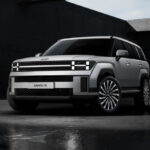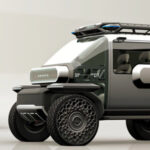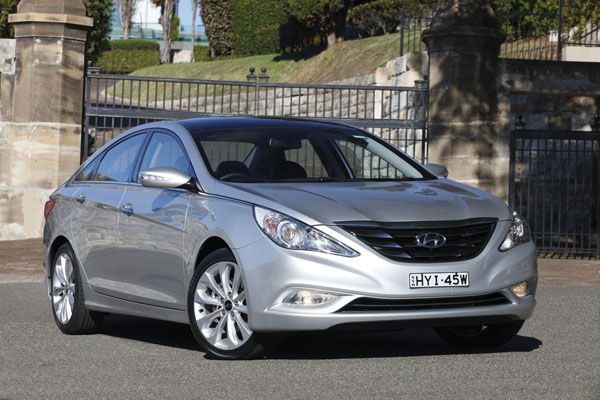Image is an extremely important factor in the marketing of any product, certainly in cars. Though many will deny it, consumers like to be seen owning and driving prestigious vehicles. To further complicate things manufacturers strive to push their company’s image higher.
Take Hyundai as a classic example. The South Korean started in Australia with value-for-money models – ‘cheap and cheerful’ wouldn’t be too unkind a description – then stepped significantly up the ladder thanks to solid improvement in build quality that lifted the reputation with consumers. Style was the next big factor, with the ‘fluidic’ shapes of the current crop of Hyundais gaining praise from consumers as well as those in the businesses of style in general.
Hyundai’s ambitious plans seem to be coming together faster than anticipated; we’ve just carried out a road test of the update to the Hyundai Santa Fe SUV Highlander and were intrigued to find that half of all Santa Fe sales are of this top-of-the-line model.
With a price tag of that’s over $50,000 the Hyundai Highlander is a long way from being ‘cheap and cheerful’.
Does this mean Hyundai will one day tackle the big-name Germans in the prestige stakes? It seems unlikely – dare we say highly improbable? But you never can tell with the extremely ambitious Koreans…
Anyhow, back to the upgraded-for-2015 Santa Fe Highlander. In the Euro manner, styling changes are minimal, with the emphasis being on under the skin work.
There’s a slightly darker shade to the chrome on the grille, and daytime running lights built into the foglight apertures. That’s about it for the visual changes.
New standard features on the Highlander are smart parking assist, though only into parallel spots not those at right angles; front parking sensors, a lane departure warning system; hands-free tailgate that doesn’t require the ‘kick’ operation of other brands smart tailgates, the Hyundai unit simply senses the car key is close and opens the tailgate. You can override this if need be; perforated ventilated front seats that heat and cool (I just love cooled seats); and a large panoramic sunroof.
In an interesting move, the outboard rear seats can also be heated, though they are not cooled.
Note that the DRLs are fitted to all models in the range, not just the Highlander, these are a handy safety feature.
Santa Fe’s suspension and steering systems have been revised, with a more powerful computer in the electric power steering system to changes for faster response and feedback.
However, on some of the broken bitumen surfaces during our test period, mainly in northern NSW, we found the ride to be rather firm as the suspension struggled to keep up with road wheel movements.
Has Hyundai Australia leant a little too far towards the sporty side of the handling / comfort equation for the typical owner of a seven-seat SUV? Try for yourself during your private test drive – but we aware that it was only on extreme roads that we had this problem.
We tried out Santa Fe in some mild off-road conditions and were impressed with the way it handled the sort of roads likely to be tackled by adventurous families.
Inside stylish gen-three Santa Fe cabin we found the controls conveniently large and correctly placed, with a large central screen on the higher grade models. We appreciated the good satellite navigation system, which comes with Suna traffic information.
There is plenty of head and legroom in the front and centre seats. The third row seats are best kept for youngsters, but that’s the norm in this class of crossover.
The third row of seats fold flat to provide plenty of luggage room when in five-seat mode. Indeed even with all seven seats in place there’s still 506 litres available. With both rows of rear seats folded (the centre row not quite flat) Hyundai Santa Fe can be used as a sort-of van with capacity up to 1615 litres.
Infotainment is extensive: Bluetooth phone and audio streaming; auxiliary and USB sockets; mp3 audio; 7-inch screen; and premium audio in the Highlander.
Power for the automatic Santa Fe Highlander we tested was provided by a four-cylinder, 2.2-litre, turbo-diesel with 145 kW and a big 436 Nm of torque, the latter between 1800 and 2500 rpm. That’s more than enough grunt to make for safe overtaking with a minimal time spent on the wrong side of the road.
Standard safety features include seven airbags, ABS brakes with electronic brakeforce distribution and brake assist; stability and traction control; downhill brake control.
Hyundai continues to push ever harder into the Australian market and the latest edition of the seven-seat Santa Fe Hylander promises to drum up even more sales.




